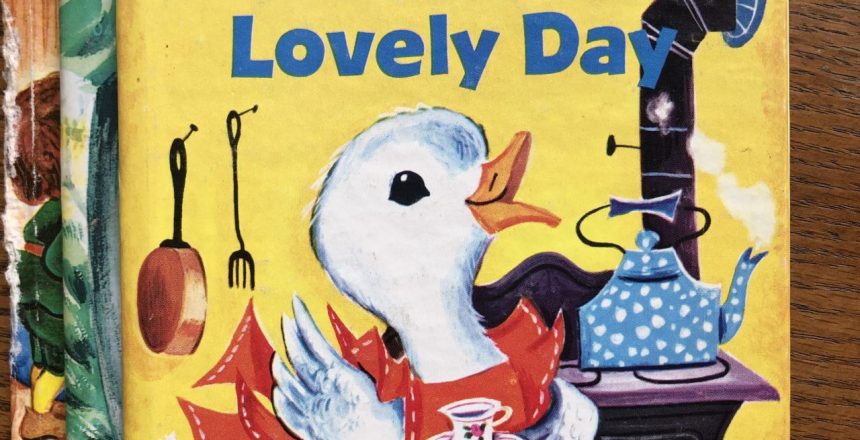“Old” is a relative word. Each of us may be looking for a particular time period and therefore “old” may not be of any importance. For me I prefer books that are from my childhood or before (pre-1980), and these tips will help you sort through time periods.
- Does it have a bar code? This is a great way to determine a general age of a children’s book. Bar codes started to appear on children’s books like Rand McNally, Golden Books, and Whitman in the early to mid 1980s. Therefore, if you see a Mrs. Duck’s Lovely Day (Rand McNally Junior Elf) which is copyrighted in MCMLV (1960) but it has a bar code, then you know it is a modern printing of the original copyright. Many sellers don’t know a lot about the books they sell and therefore may inadvertently claim it is as old as the copyrighted date. Don’t be fooled!
- What is the price? The price is a great indicator of age in a children’s book. Rand McNally’s earliest books didn’t have a price on them but that didn’t last long. The first price printed on the book was .15 cents. Over the years it increased. By the late 1970s books went to .35 cents, then .39 cents, .49 cents, etc. if you find a book that is .59 cents or .69 cents, it will likely have a bar code.
- Learn about the brand you are interested in. Golden Books have well documented history so you can find information about price, spine color, title release dates, how to tell what printing it is, etc. If there are other brands you are interested in, Google is a great starting point.
Collecting children’s books is a relatively inexpensive hobby and delightfully fun. If you want to try it, start by looking for books that you had a child

